Auto mechanic referred for corneal foreign body
This report emphasizes the importance of a complete ophthalmoscopic examination in all patients who present with corneal foreign bodies. Grinding metal results in metallic particles flying off in all directions at very high rates of speed. Occasionally these foreign bodies can hit the eye with enough force to cause a full-thickness laceration. A careful and thorough exam should be done on all patients, and they should be dilated to ensure that there is no peripheral pathology. It is not enough to simply remove a corneal foreign body, because a potential intraocular foreign body may be missed.
The case
A 35-year-old male patient was referred to the eye clinic with a corneal foreign body. He worked as an auto mechanic, and while working, he felt something hit his eye. He was seen at the emergency department with bilateral eye pain, irritation, redness and tearing. He admitted to not wearing his safety glasses at times and further confirmed previous episodes of corneal foreign bodies that required removal by multiple other ophthalmologists. The most recent episode was 1 month ago.
On examination, the patient’s best corrected visual acuity was 20/30-1 in the right eye and 20/25+1 in the left eye. His IOP, pupil exam and extraocular muscle movements were normal. Confrontation visual field testing was full in the right eye but limited superiorly in the left eye. Anterior segment examination of the right eye revealed diffuse 2+ injection, a metallic foreign body at 3 o’clock near the limbus that was removed, a residual rust ring that was burred and multiple anterior stromal scars. Examination of the left eye revealed trace injection with a smaller metallic foreign body at 4 o’clock that was removed and a residual rust ring that was burred. Closer examination of the left eye revealed a linear scar at 3 o’clock that appeared to be full thickness through the cornea (Figure 1a) with an iris defect underlying the corneal scar (Figure 1b).
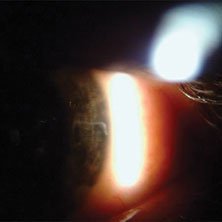
Figure 1a. A linear scar at 3 o’clock appears to be full thickness through the cornea in the left eye.
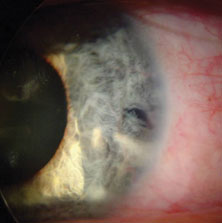
Figure 1b. An iris defect underlying the corneal scar in the left eye.
Images: Srivastava SK
The patient stated that he had never been dilated during his previous foreign body removals. He related an episode approximately a year ago in which he was hit in the left eye with significant force while grinding brakes. He further admitted to a decline in his night vision and peripheral vision in the left eye since that episode and prior to his current injury.
After dilation, the patient was noted to have a polychromatic cataract in the left eye with vacuoles along the posterior capsule in the nasal portion of the lens. He had a retroillumination defect at the site of the previously noted iris defect (Figure 2). Dilated examination of the right eye was normal (Figure 3). Dilated examination of the left eye revealed 1+ vitreous haze, retinal pigment epithelial changes inferiorly, sclerotic vessels inferiorly and an approximately 1-cm foreign body in the vitreous cavity resting on the retina inferiorly (Figures 4 and 5). The retina was atrophic and pigmented around the foreign body site.
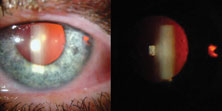
Figure 2. Retroillumination defect at the site of previously noted iris defect in the left eye.
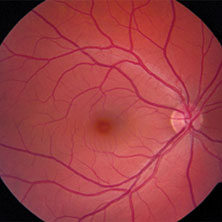
Figure 3. Dilated examination of the right eye was normal.
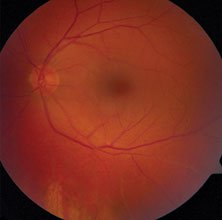
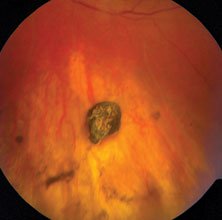
Figures 4 and 5. Dilated examination of the left eye revealed 1+ vitreous haze, retinal pigment epithelial changes inferiorly, sclerotic vessels inferiorly and an approximately 1-cm foreign body in the vitreous cavity resting on the retina inferiorly.
Goldmann visual field was full in the right eye. The visual field in the left eye showed severe generalized constriction with near wipeout of the superior visual field (Figure 6). An electroretinogram (ERG) showed generalized decreased signal intensity in the left eye for photopic, scotopic and 30 Hz flicker responses (Figures 7, 8 and 9).
The patient underwent uncomplicated pars plana vitrectomy (PPV) with removal of the intraocular foreign body. His postoperative course was uncomplicated without change in his symptoms.

Figure 6. Visual field in the left eye showed severe generalized constriction with near wipeout of the superior visual field.
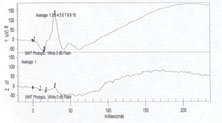
Figure 7. An ERG showed generalized decreased signal intensity in the left eye for photopic response.
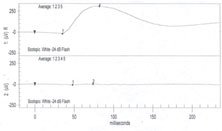
Figure 8. An ERG showed generalized decreased signal intensity in the left eye for scotopic response.
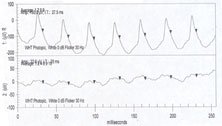
Figure 9. An ERG showed generalized decreased signal intensity in the left eye for 30 Hz flicker response.
Discussion
Intraocular foreign bodies containing iron that are retained for an extended period of time can result in significant ocular toxicity, especially to the retina, resulting in a slowly progressive retinal degeneration with progressive vision loss and eventual blindness. Iron toxicity, or siderosis bulbi, of the eye is characterized by iris heterochromia, pupillary mydriasis, cataract formation, lens dislocation, retinal degeneration and secondary glaucoma. The tissues involved are all of epidermal or neuroectodermal origin because this is where the iron tends to deposit intracellularly.

Sunil K. Srivastava
Iron toxicity leads to dysfunction of all layers of the retina. Initially the ERG may show an increased A-wave, but there is eventually a generalized reduction of the amplitude of the ERG waveform. This reduction may be reversible in early parts of the disease, but as the siderosis progresses, the ERG will eventually be permanently extinguished.
Surgical excision of the foreign body is necessary to prevent progression of the siderosis. Occasionally the intraocular foreign body may not be evident on clinical examination, and presence of the signs of siderosis should prompt the clinician to perform imaging to locate the foreign body. The most common approach for surgical excision of an intraocular foreign body involves a PPV with enlargement of one of the ports to remove the actual foreign body.
References:
- Barr CC, Vine AK, Martonyi CL. Unexplained heterochromia. Intraocular foreign body demonstrated by computed tomography. Surv Ophthalmol. 1984;28(5):409-411.
- Imaizumi M, Matsumoto CS, Yamada K, Nanba Y, Takaki Y, Nakatsuka K. Electroretinographic assessment of early changes in ocular siderosis. Ophthalmologica. 2000;214(5):354-359.
- Schechner R, Miller B, Merksamer E, Perlman I. A long term follow up of ocular siderosis: quantitative assessment of the electroretinogram. Doc Ophthalmol. 1990;76(3):231-240.
- Schocket SS, Lakhanpal V, Varma SD. Siderosis from a retained intraocular stone. Retina. 1981;1(3):201-207.
- Sneed SR, Weingeist TA. Management of siderosis bulbi due to a retained iron-containing intraocular foreign body. Ophthalmology. 1990;97(3):375-379.
- Tawara A. Transformation and cytotoxicity of iron in siderosis bulbi. Invest Ophthalmol Vis Sci. 1986;27(2):226-236.
- Weiss MJ, Hofeldt AJ, Behrens M, Fisher K. Ocular siderosis. Diagnosis and management. Retina. 1997;17(2):105-108.
For more information:
- Sunil K. Srivastava, MD, can be reached at Cleveland Clinic Main Campus, 9500 Euclid Ave., Cleveland, OH 44195; email: srivass2@ccf.org.
- Disclosures: Sharma has no relevant financial disclosures. Srivastava receives research funding from Allergan, Bausch + Lomb and Novartis and is a consultant for Bausch + Lomb.
